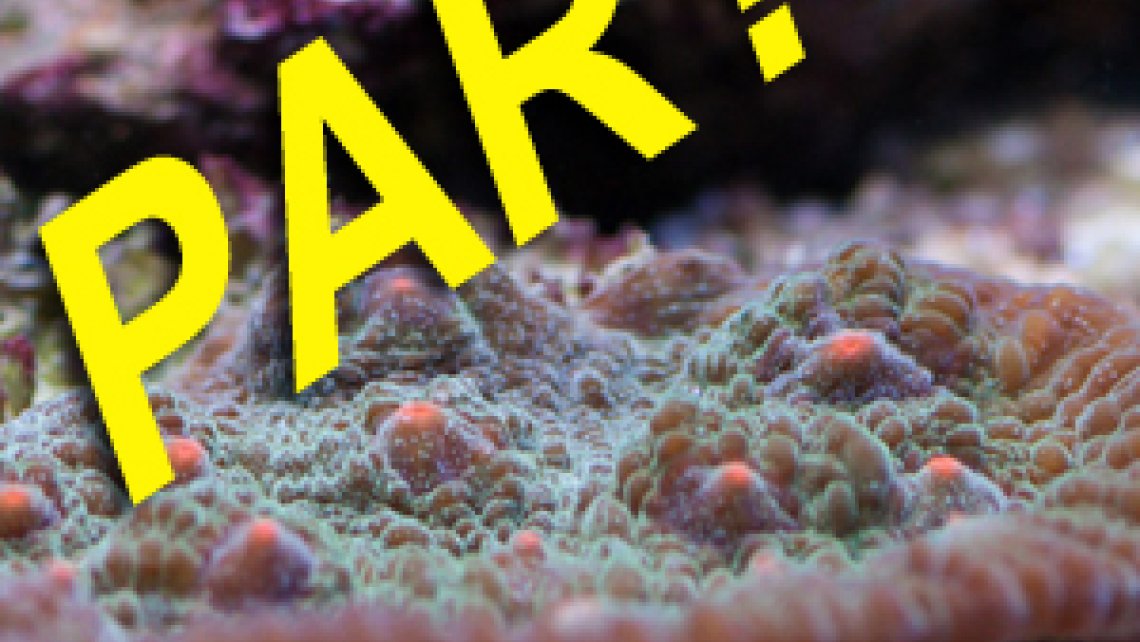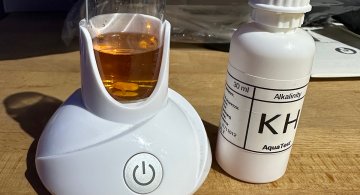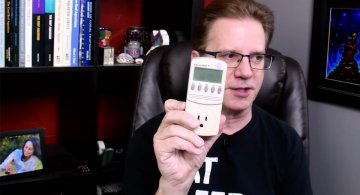Comparing PAR of new & old bulbs
I recently purchased some new ballasts and bulbs for the 400g. I've been observing the livestock and debated whether to change the current configuration to only 250w bulbs or to upgrade all the way across to 400w bulbs. For the past 10 years, I've been running 250w - 400w - 250w bulbs because the center bulb was always a 20,000K bulb and the outer bulbs were 10,000K. This worked nicely, and it looked like the sun was shining down in the center. PAR was equalized since the bluer bulb's lesser intensity was punched up with the additional watts.
However, 10 months ago I installed TwinArc bulbs which are 10,000K for a few hours and 20,000K for a few hours and what I ended up seeing was a hot spot in the center of the reef. Daily. I had two choices: Change the center bulb to a 250w bulb and ballast, or change the two outer bulbs and ballasts to 400w. With the footprint of the reef being seven feet long and three feet wide, it seemed the better choice was to upgrade to 400w and give the corals a better bath of light.
Before making the change, I measured the PAR of the 10-month old bulbs to get a sense of what the corals were getting now versus what the brand new bulbs and ballasts would provide. All PAR measurements were taken under 20,000K spectrum. That's not exactly ideal for PAR meters since they are designed for sunlight but the tank was already in blue-mode and I didn't feel like changing them over for the test. Hence, a grain of salt with these numbers, right?
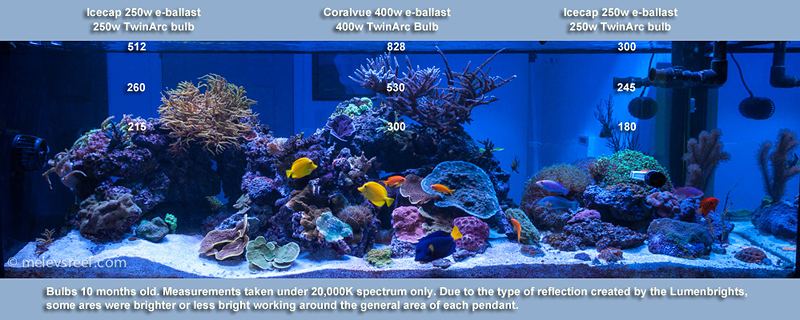
And here are the new bulb numbers with the increased wattage.
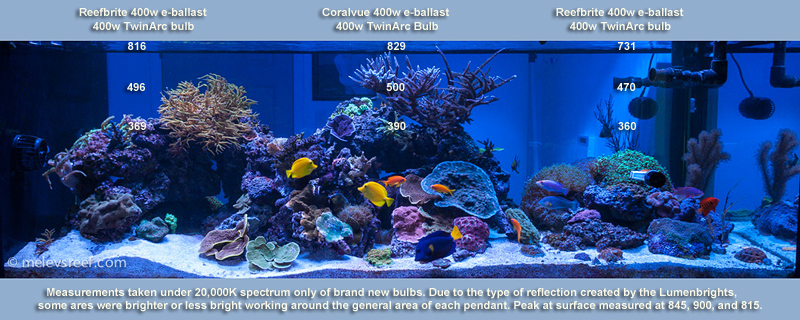
Measurements were primarily taken at the surface of the water, and I moved the sensor around the footprint of each pendant to see the numbers displayed on the meter. The area near the socket was naturally lower, and the PAR directly under the bulb was less than a couple of hot spots to the immediate left or right of the bulb, due to the design of the multi-faceted Lumenbright's reflective surfaces.
I also measured where a couple of corals were just to see what that exact coral was getting, both with the old as well as the new. I really need to use that meter more often because it's... enlightening. 
